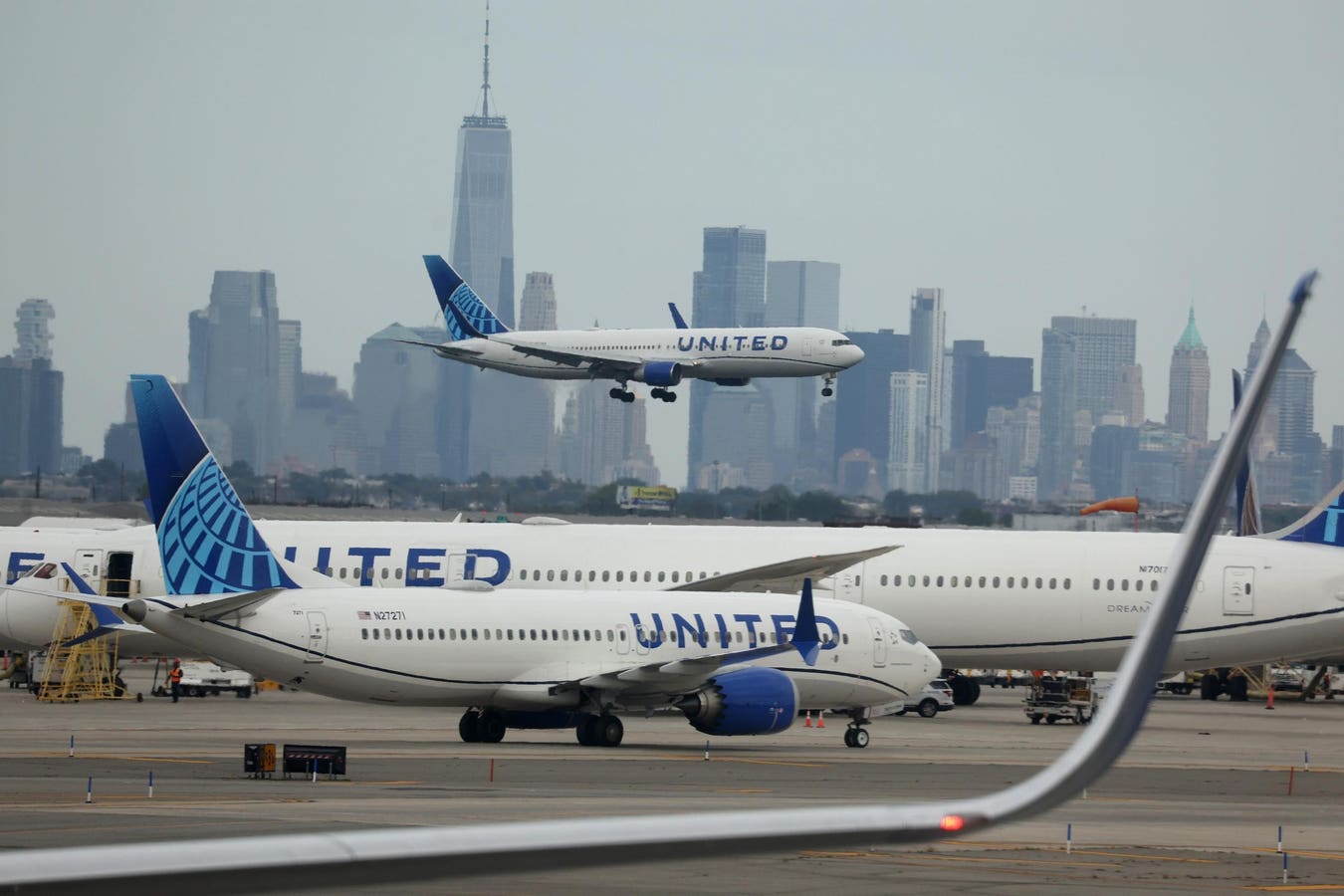Following an extensive review and comment process, the Federal Aviation Administration has published its final rule to reduce the carbon emissions of larger aircraft. The rule, which goes into effect on April 16, 2024, requires manufacturers to implement more fuel-efficient technologies on newly built planes after January 1, 2028. The new rule will not apply to current airplanes in service.
“We are taking a large step forward to ensure the manufacture of more fuel-efficient airplanes, reduce carbon pollution, and reach our goal of net-zero emissions by 2050,” FAA Administrator Mike Whitaker said in the rule’s announcement.
The new FAA standards affect airplanes used in airline operations, including the Boeing
BA
The FAA estimates that the planes covered by the new rule currently contribute “nine percent of domestic transportation emissions and two percent of total U.S. carbon pollution.”
Aligning U.S. Emissions Rules To International Standards
The new rule aligns U.S. aviation environmental protection standards with those of the International Civil Aviation Organization. In 2009, ICAO’s Council developed a Global Framework to limit aviation’s climate impact, including measures to reduce aviation’s carbon footprint and a CO2 emissions standard for subsonic planes. The Clean Air Act required the EPA to set emissions standards for aircraft engines and the FAA to enforce them. The EPA’s final rule 2021 established new standards for airplane greenhouse gas emissions. The FAA worked these into its certification regulations and ensured consistency with ICAO’s CO2 emissions standards.
New Rule Applies To Hybrid Airplanes And Airplanes Using Alternative Fuels
The rule applies to airplanes that meet the size requirement, regardless of their fuel source. The FAA’s new rule is a technology-based standard that will measure an airplane’s performance in terms of fuel efficiency. It requires manufacturers to improve engine propulsion efficiency, aerodynamics, and airplane weight irrespective of the type of fuel used to fly the plane. Therefore, the FAA emphasized that the rule could apply to any airplanes that meet the rule’s criteria regarding size, including hybrids. Using alternative fuels does not exempt airplanes from compliance. Even when aircraft are approved to fly on 100% sustainable aviation fuel in the future, they will need to satisfy the FAA’s emissions rule.
Cost Impact Of The New Aircraft Emissions Rule
The FAA confirmed the rule does not apply to airplanes currently in service, which reduces the cost burden of compliance for existing fleets.
As required for all aviation regulations, the FAA conducted a Regulatory Impact Analysis to assess the cost impacts of the new environmental rule. The Administration found that the costs to certify airplanes to the fuel efficiency standard could be anywhere from $800,000 to $1.4 million. However, the FAA pointed out that manufacturers would already incur these costs to certify new aircraft as they would need to certify aircraft to the standard of foreign regulators separately. By avoiding these foreign certification costs, the new rule means manufacturers could save $2.2-$2.6 million over ten years.
For its part, Boeing welcomed the new rule. “It is of paramount importance to the U.S. commercial aerospace industry that the EPA standard, which has been developed to both satisfy its obligations under the CAA and, at the same time, to harmonize the nation’s regulations with the ICAO standard, be expeditiously implemented by the FAA through clear, consistent regulations,” Boeing said in its cover letter to its comments on the rule. “Boeing is committed to responsible environmental stewardship and is continually investigating innovative pathways to improving the environmental performance of its products.”
Airlines Support New Aircraft Environmental Standards
During the comment period on the rule, Airlines for America, which represents U.S. carriers, including American Airlines
AAL
DAL
The airline association referenced measures U.S. airlines have taken to reduce their environmental impact over the past fifty years. These included improving fuel efficiency by more than 135% between 1978 and 2021, saving over 5.5 billion metric tons of carbon dioxide. That equates to taking more than 28 million cars off the road, on average, each year. Greater fuel efficiency also reduces other combustion emissions, including nitrogen oxides and particulate matter. Airlines also reduced their noise pollution footprint by 94% since 1975.
“Continued progress depends on protecting our environment and strengthening the sustainability of our economies. We acknowledge and embrace our responsibility to address climate change and applaud this Proposed Rule, as it would advance environmental progress through a technically feasible (ensuring air safety) and economically reasonable technical standard,” the A4A wrote in their comments on the rule. “We also are mindful of the importance of this rulemaking, like the EPA rulemaking that preceded it, to the continued vitality and competitiveness of U.S. aircraft and aircraft engine manufacturers.”
Read the full article here





